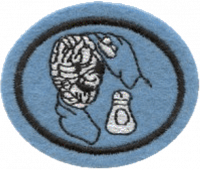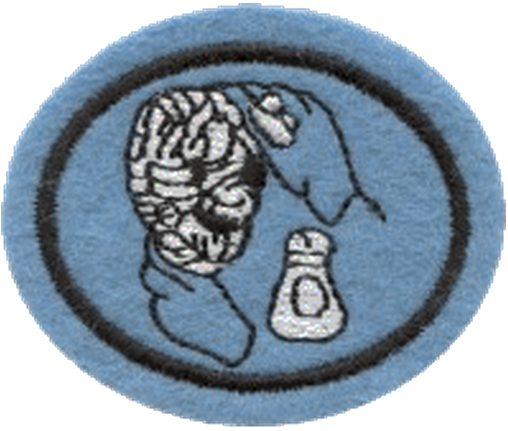|
|
| Line 19: |
Line 19: |
| | <noinclude></noinclude> | | <noinclude></noinclude> |
| | | | |
| − | <div lang="en" dir="ltr" class="mw-content-ltr">
| + | {{clear}} |
| − | #Prepare the paper: tear up your paper into little pieces (newspaper works well and is free) or collect paper from an office shredder. In some instances, this will be good enough, but if you need finer pulp, throw the paper into a blender with some water.
| |
| − | #Leave the paper in water at least overnight to soak, or boil in abundant water until the paper dissolves in a pulp.
| |
| − | #Drain excess water through a fine sieve. Don't plug your sink with pulp.
| |
| − | #Add adhesive - which could be white glue or wallpaper paste or any of a variety of other adhesives depending on the desired effect. Amounts are not given here - you need to experiment to find a consistency that works well for what you are trying to do.
| |
| − | #Shape the pulp directly over or inside the a form. You can also sculpt directly like clay without a form to guide you, especially for smaller or simpler objects
| |
| − | </div>
| |
| | | | |
| − | <div lang="en" dir="ltr" class="mw-content-ltr">
| + | <noinclude></noinclude> |
| − | <noinclude> | |
| − | </div></noinclude>
| |
| | {{CloseReq}} <!-- 2a --> | | {{CloseReq}} <!-- 2a --> |
| | {{ansreq|page={{#titleparts:{{PAGENAME}}|2|1}}|num=2b}} <!--T:8--> | | {{ansreq|page={{#titleparts:{{PAGENAME}}|2|1}}|num=2b}} <!--T:8--> |
| − | <noinclude><div lang="en" dir="ltr" class="mw-content-ltr"> | + | <noinclude></noinclude> |
| − | </noinclude> | |
| − | </div>
| |
| | | | |
| − | <div lang="en" dir="ltr" class="mw-content-ltr">
| + | {{clear}} |
| − | The '''Paper Strip Method''' uses layers of paper strips glued together with adhesive.
| |
| − | </div>
| |
| | | | |
| − | <div lang="en" dir="ltr" class="mw-content-ltr">
| + | {{clear}} |
| − | #Tear or cut your paper (newspaper works well) into strips. The width and length of the strips will depend on the size of the object you want to create.
| |
| − | #Create a form for support on which to glue the paper strips. It can be an armature or skeleton, often of wire mesh over a structural frame, or you might use an object to create a cast. Oil or grease can be used as a release agent if needed.
| |
| − | </div>
| |
| | | | |
| − | <div lang="en" dir="ltr" class="mw-content-ltr">
| + | {{clear}} |
| − | #Make your glue after you are all ready to use it as it will start drying out. The traditional glue is
| |
| − | </div>
| |
| | | | |
| − | <div lang="en" dir="ltr" class="mw-content-ltr">
| + | {{clear}} |
| − | * 6 cups water
| |
| − | * 1 cup white flour
| |
| − | </div>
| |
| | | | |
| − | <div lang="en" dir="ltr" class="mw-content-ltr">
| + | {{clear}} |
| − | Mix the flour into the water thoroughly with your hands, being sure to break up all the lumps. You might try heating the mixture too, but do not let it come to a boil. You can vary the amount of flour or water to make the glue thicker or thinner. Experiment to find what works best for you.
| |
| − | </div>
| |
| | | | |
| − | <div lang="en" dir="ltr" class="mw-content-ltr">
| + | {{clear}} |
| − | You can also add a few tablespoons of bleach to retard the growth of mold, but make sure everyone who is going to use the paste knows that you did this - after all, flour and water are the same ingredients that you use to make bread, and you don't want your Pathfinders performing any taste-tests on a bleach-laden batch of glue!
| |
| − | </div>
| |
| | | | |
| − | <div lang="en" dir="ltr" class="mw-content-ltr">
| + | {{clear}} |
| − | #Soaked the paper in the paste until saturated
| |
| − | #Layer the saturated pieces allow to dry slowly
| |
| − | #When the glue dries, the paper stays in place and binds together forming a (hopefully) beautiful sculpture.
| |
| − | #Once dried, the sculpture can be cut, sanded and/or painted. Waterproofing with water-repelling paint works well.
| |
| − | </div>
| |
| | | | |
| − | <div lang="en" dir="ltr" class="mw-content-ltr">
| + | {{clear}} |
| − | The traditional method of making papier-mâché adhesive is to use a mixture of water and flour or other starch, mixed to the consistency of heavy cream. Other adhesives can be used if thinned to a similar texture, such as polyvinyl acetate-based glues (wood glue or, in the United States, white Elmer's glue). Adding oil of cloves or other additives such as salt or a little bleach to the mixture reduces the chances of the product developing mold.
| |
| − | </div>
| |
| | | | |
| − | <div lang="en" dir="ltr" class="mw-content-ltr">
| + | <noinclude></noinclude> |
| − | <noinclude> | |
| − | </div></noinclude>
| |
| | {{CloseReq}} <!-- 2b --> | | {{CloseReq}} <!-- 2b --> |
| | {{CloseReq}} <!-- 2 --> | | {{CloseReq}} <!-- 2 --> |
| | {{ansreq|page={{#titleparts:{{PAGENAME}}|2|1}}|num=3}} | | {{ansreq|page={{#titleparts:{{PAGENAME}}|2|1}}|num=3}} |
| − | <noinclude><div lang="en" dir="ltr" class="mw-content-ltr"> | + | <noinclude></noinclude> |
| − | </noinclude> | + | <!-- 3. Estar familiarizado con todos los ingredientes y saber por qué se usan. --> |
| − | <!-- 3. Be familiar with all ingredients and know why they are used. --> | |
| − | </div>
| |
| | | | |
| − | <div lang="en" dir="ltr" class="mw-content-ltr">
| + | {{clear}} |
| − | :Here are some thoughts on the paste from Wikipedia: [[w:Paper maché|Paper Maché]]
| |
| − | </div>
| |
| | | | |
| − | <div lang="en" dir="ltr" class="mw-content-ltr">
| + | {{clear}} |
| − | :Paper-mâché paste is the substance that holds the paper together. The traditional method of making paper-mâché paste is to add one part water to one part flour. Some artists prefer to boil the paste, saying that it makes the consistency smoother. Water to flour ratio is changed to five parts water to one part flour in this case. Other artists use a three to one or a one to one ratio of water and Polyvinyl acetate (PVA glue). Still others say that starch makes a fine paste. Adding a dash of cinnamon to the mixture gives the paste a pleasant smell; adding a dash of salt reduces the chances of the product developing mold.
| |
| − | </div>
| |
| | | | |
| − | <div lang="en" dir="ltr" class="mw-content-ltr">
| + | <noinclude></noinclude> |
| − | <noinclude> | |
| − | </div></noinclude>
| |
| | {{CloseReq}} <!-- 3 --> | | {{CloseReq}} <!-- 3 --> |
| | {{ansreq|page={{#titleparts:{{PAGENAME}}|2|1}}|num=4}} | | {{ansreq|page={{#titleparts:{{PAGENAME}}|2|1}}|num=4}} |
| − | <noinclude><div lang="en" dir="ltr" class="mw-content-ltr"> | + | <noinclude></noinclude> |
| − | </noinclude> | + | <!-- 4. Hacer, pintar y barnizar al menos dos artículos a partir de la pulpa. --> |
| − | <!-- 4. Make, paint and varnish at least two articles from pulp. --> | |
| − | </div>
| |
| | | | |
| − | <div lang="en" dir="ltr" class="mw-content-ltr">
| + | {{clear}} |
| − | The painting adds the color, while the varnish makes the art more water resistant and gives it a solid surface. Have fun.
| |
| − | </div>
| |
| | | | |
| − | <div lang="en" dir="ltr" class="mw-content-ltr">
| + | {{clear}} |
| − | [[Image:|200px|right|Papier-mâché from Brazil, headgear for Marti Gras]]
| |
| − | </div>
| |
| | | | |
| − | <div lang="en" dir="ltr" class="mw-content-ltr">
| + | <noinclude></noinclude> |
| − | <noinclude> | |
| − | </div></noinclude>
| |
| | {{CloseReq}} <!-- 4 --> | | {{CloseReq}} <!-- 4 --> |
| | {{ansreq|page={{#titleparts:{{PAGENAME}}|2|1}}|num=5}} | | {{ansreq|page={{#titleparts:{{PAGENAME}}|2|1}}|num=5}} |
| − | <noinclude><div lang="en" dir="ltr" class="mw-content-ltr"> | + | <noinclude></noinclude> |
| − | </noinclude> | + | <!-- 5. Hacer, pintar y barnizar al menos dos artículos de pasta y tiras de papel. --> |
| − | <!-- 5. Make, paint and varnish at least two articles from paste and paper strips. --> | |
| − | </div>
| |
| | | | |
| − | <div lang="en" dir="ltr" class="mw-content-ltr">
| + | {{clear}} |
| − | If you need further instruction we suggest searching YouTube for demonstration videos. Have fun creating.
| |
| − | </div>
| |
| | | | |
| − | <div lang="en" dir="ltr" class="mw-content-ltr">
| + | <noinclude></noinclude> |
| − | <noinclude> | |
| − | </div></noinclude>
| |
| | {{CloseReq}} <!-- 5 --> | | {{CloseReq}} <!-- 5 --> |
| | {{ansreq|page={{#titleparts:{{PAGENAME}}|2|1}}|num=6}} | | {{ansreq|page={{#titleparts:{{PAGENAME}}|2|1}}|num=6}} |
| − | <noinclude><div lang="en" dir="ltr" class="mw-content-ltr"> | + | <noinclude></noinclude> |
| − | </noinclude> | + | <!-- 6. Enviar los artículos al examinador y tener la mano de obra aprobada. --> |
| − | <!-- 6. Submit articles to examiner and have workmanship approved. --> | |
| − | [[Image:Preparazione vendola.jpg|thumb|500px|Building of a papier maché mask in the Carnival of Massafra]]
| |
| − | As the instructor, you will be responsible for judging the workmanship of the projects. The most important consideration is that you apply a fair standard and not show favoritism. Pathfinders are quickly able to detect unfairness, as it is an extremely important concept to them.
| |
| − | </div>
| |
| | | | |
| − | <div lang="en" dir="ltr" class="mw-content-ltr">
| + | {{clear}} |
| − | <br style="clear:both">
| |
| − | </div>
| |
| | | | |
| − | <div lang="en" dir="ltr" class="mw-content-ltr">
| + | <noinclude></noinclude> |
| − | <noinclude> | |
| − | </div></noinclude>
| |
| | {{CloseReq}} <!-- 6 --> | | {{CloseReq}} <!-- 6 --> |
| | <noinclude><div lang="en" dir="ltr" class="mw-content-ltr"> | | <noinclude><div lang="en" dir="ltr" class="mw-content-ltr"> |


